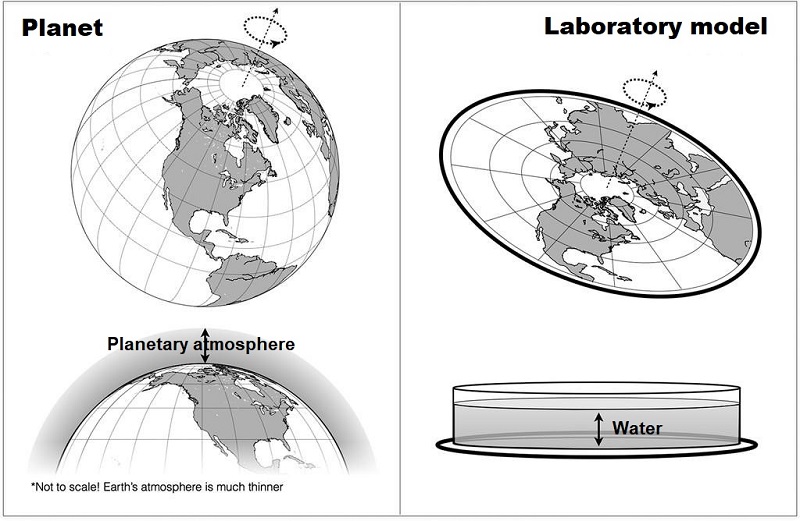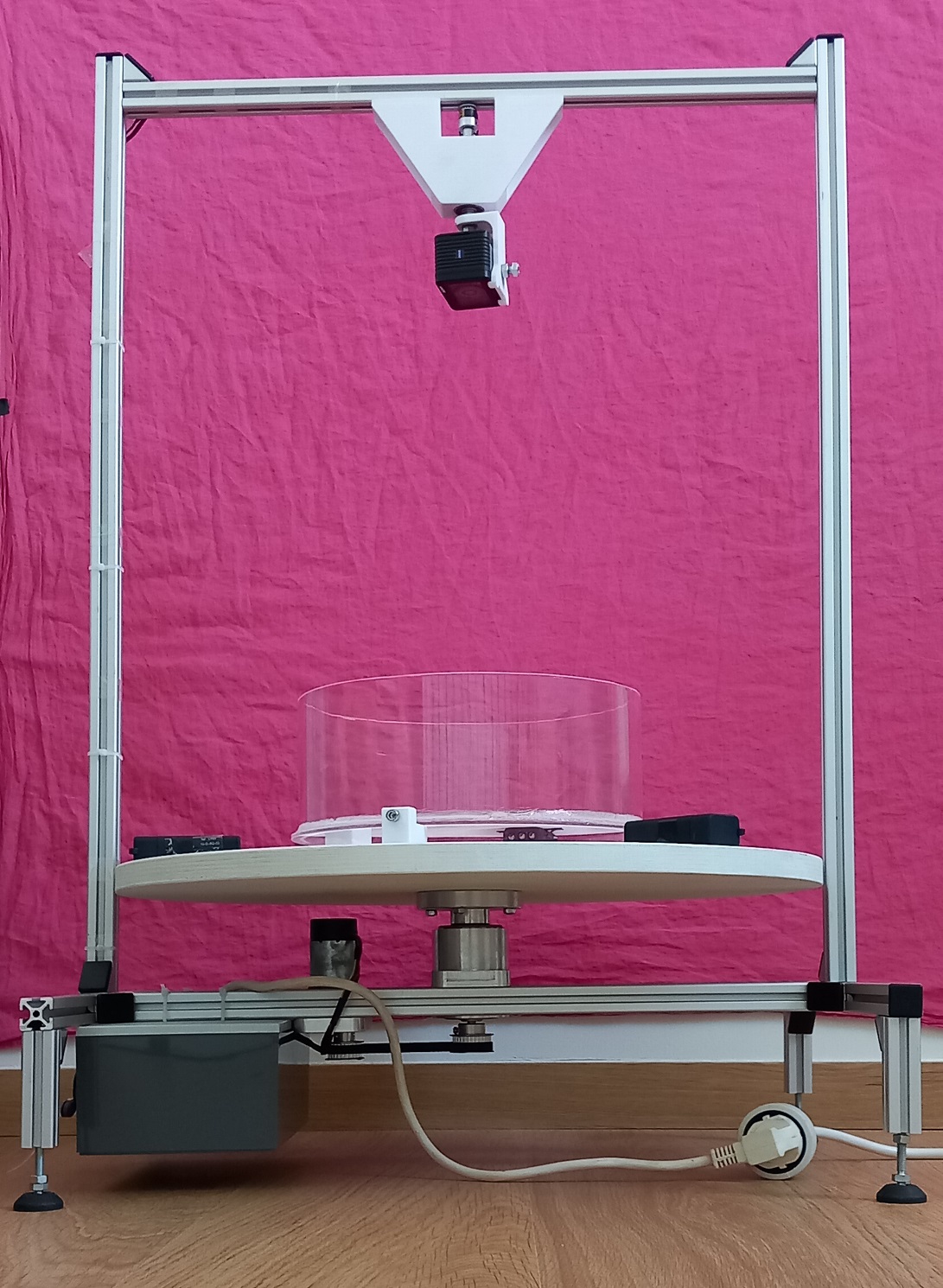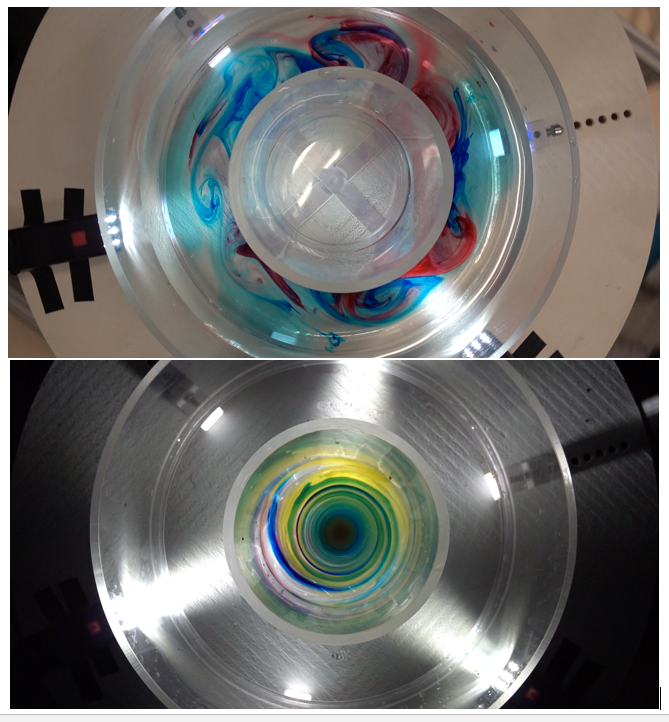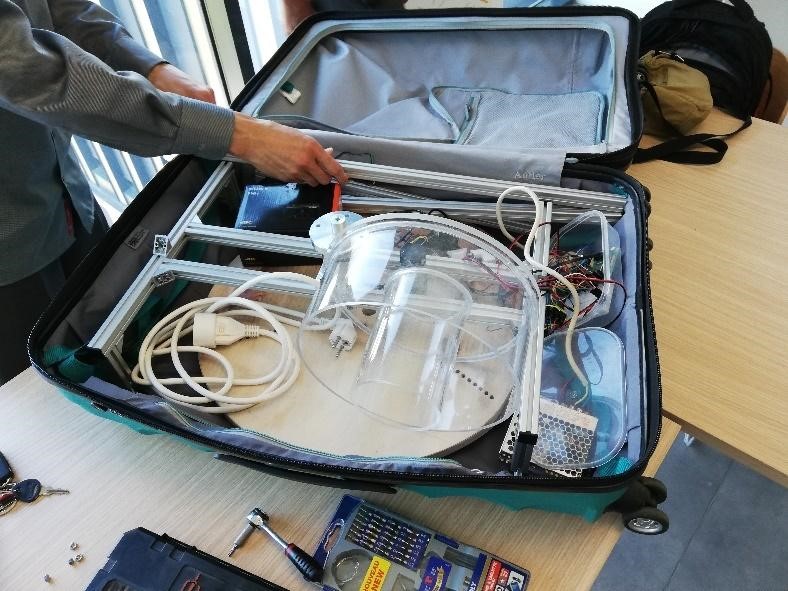Demonstrating Planetary Atmosphere Weather in a Portable Rotating Tank
- 1Centre for Mars Meteorology Monitoring, Paneureka, Le Bourget-du-Lac, France
- 2Laboratoire de Météorologie Dynamique, IPSL/CNRS, Paris, France
- 3Space Science Institute, Boulder, CO, USA
Introduction: This project aims to create a small-scale physical simulator to demonstrate the effects of Coriolis and centrifugal forces in a uniformly rotating fluid. The pedagogical goal is to illustrate the key role of rotation in planetary atmosphere dynamics to students and the public through simple experiments in a portable laboratory setting. The design and production of a prototype began in 2021 as a student project. The Europlanet Public Engagement Funding Scheme provided funding to enhance the device in 2022. Further improvements to the prototype are ongoing, but the device is already suitable for outreach events. Plans for the future include transitioning from prototyping to serial production and developing step-by-step experiment guidelines.
The device: Rotating tanks of various sizes are already in use at several geophysical laboratories (Fig. 1). However, our device stands out due to four innovative features:
- The device, tentatively named "Coriotron" or "Rotatron" (the final name is yet to be determined), is specifically designed to be folded and fit into a medium-sized suitcase for easy transportation to outreach and educational events (Fig. 5).
- It is adaptable for conducting a variety of experiments demonstrating the role of rotation in planetary atmospheric dynamics. For example, it can replicate several meteorological phenomena such as mid-latitude waves (Earth, Mars) and coherent vortices (polar or mid-latitude), as shown in Fig. 4.
- We are committed to minimizing production costs by seeking technical solutions that offer the best quality-to-price ratio (Fig. 2-3).
- Our aim is to create a device that is user-friendly and comfortable to operate while maintaining rigorous scientific standards.
Currently, the device consists of a 50cm-diameter, 8kg-weight, motor-driven, wooden rotating platform. A plexiglass cylinder filled with water can be attached to the platform. An adjustable arm allows for the secure mounting of a camera approximately 50cm above the platform, enabling image capture in the rotating reference frame (refer to Fig. 2-4). An illumination system, although still in need of improvement, provides optimal lighting conditions for visualization. We currently control the device using Python-based software, with ongoing development to implement an ergonomic Graphical User Interface (GUI).
Presently, the video signal from the camera is routed to a mobile phone and then shared with a laptop using an application. However, this setup introduces delays in signal transmission, which is not ideal. We are actively seeking solutions to directly transmit the video signal from the camera to a laptop and subsequently to a large screen or projector.
Vision: If we successfully complete the prototyping of the initial device at relatively low costs, we can consider future production to meet the needs of the planetology and geophysics communities for portable experiments. The vision of this project is to manufacture such devices for distribution to multiple European institutions, accompanied by the development of step-by-step experiment guidelines. In doing so, it aligns with the objective of expanding and supporting a diverse and inclusive planetary community across Europe, while also fostering international collaboration to share best practices for utilizing the device during outreach events.
Moreover, art and science seamlessly blend during experiments with this device, where two-dimensional turbulence in the rotating frame creates captivating abstract paintings when visualized with colored dye. If artists embrace the opportunity to utilize this device for artistic expression, the project's potential outreach could expand exponentially.
Acknowledgments: The author would like to acknowledge funding from the Europlanet Public Engagement Funding Scheme 2022. The author is indebted to the “University Institute of Technology” (IUT) based in Annecy, France, for facilitating collaboration with two of their second-year students, and to the “La Turbine” cultural and educational centre (also based in Annecy, France) for offering a venue to host one of the students.

Figure 1: The rotating tank in the laboratory simulates the effect of the planetary rotation using a local flat-planet approximation (Adapted from: Hill et al., BAMS 99, Issue 12, pp 2529-2538, 2018)
Figure 2: A scheme of the portable rotating tank (Credits to: Aurélian GINET, project student in 2021)

Figure 3: Picture of the device, including the Plexiglas cylinder

Figure 4: Examples of mid-latitude waves and polar vortex reproduced in the portable rotating tank and visualized using coloured dyes

Figure 5: The device can be folded and fitted in a medium-sized suitcase
How to cite: Montabone, L.: Demonstrating Planetary Atmosphere Weather in a Portable Rotating Tank, Europlanet Science Congress 2024, Berlin, Germany, 8–13 Sep 2024, EPSC2024-1352, https://doi.org/10.5194/epsc2024-1352, 2024.